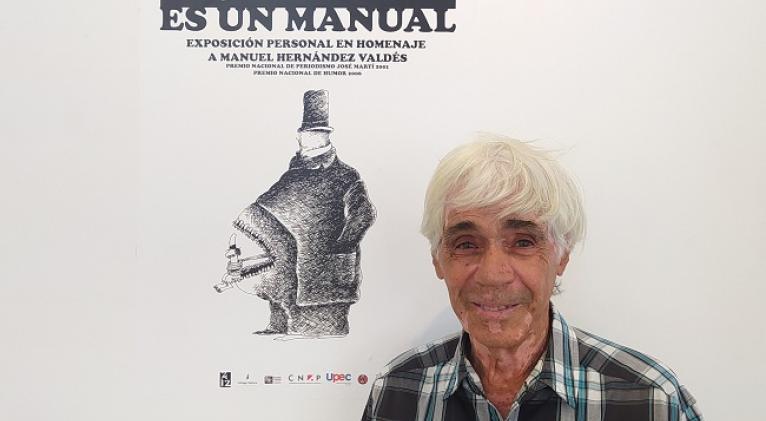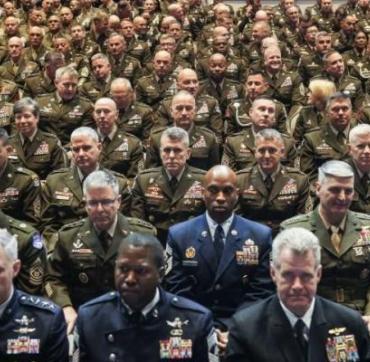Manuel Like Manuel
especiales

The recent celebration in Cuba of the XXIII International Biennial of Graphic Humor left a nice taste on the mouth of the art of seriously making people laugh. Based on tributes, the organizers of the event revived some stages of fertile lucidity in the Cuban caricature.
In an edition like this it was then difficult —if not impossible— do it without the work of Manuel Hernández (Manuel). Of the venues located in Havana, gallery 12 and 23, in El Vedado, filled its walls with 40 of his creations.
With the flattering title of "Manuel is a manual", the exhibition was full of the fine and sarcastic humor that always defined his work. Obviously, that was just a sample of the fruitful work that turned this satirical drawing artist into a true "King Midas" inside Cuba and abroad .
Because already in the 1980s he had won the Golden Aesop Grand Prize, at the International Salon in Gabrovo, Bulgaria. He was also selected among the 100 best cartoonists in the world.
In that period, the weekly Dedeté — humorous supplement of Juventud Rebelde newspaper —, the Granma, and Palante newspapers, the Bohemia magazine..., were some of the national media that regularly published the his famous caricatures.
Today, at age 80, Manuel still seems to have that kind of youthful spirit that always set him apart from his peers, and makes us love him in a special way.
I‘m united by a friendship that exceeds three decades. The year was 1989 and I ambushed him for an interview that was later published, full page, in the Granma Weekly Summary —now Granma International.
And even when I was a journalism student, Manuel accepted the bold proposal without wavering. What was first an admiration for his hilarious and sharp caricatures, later reaffirmed into an unconditional and reciprocal affection that served as a pivot for this relationship that lasts until today.
So every time we meet —like attending his tribute exhibition— is an appointment that I never miss.

He went on living on the city of Matanzas. There’s his house, his family and his artistic "emporium". Even when he started working at Dedeté, after concluding his Military Service, he always made weekly trips to Havana. A white compact car was the "Rosinante" who kept him, at a gallop, between both cities.
A CHRONICLER WAS BORN
Guamacaro Valley, in the Matanzas town of Limonar, was the beautiful landscape where Manuelito's first cry was heard —someone said, perhaps jokingly, that his first laugh— in January 1943. In 1957 he emigrated to the provincial capital and setled there.
Whenever he talks about the beginnings, the references go to his childhood, to the landscapes of his sugarcane valley, to how easy it was for him to draw from humor —or vice versa?—, of the great masters José Luis Posada, Juan Padrón, Virgilio Martinez. From them he learned the essence to fuel his genius.

With his work, the Cuban and international reality began to transcend in the form of a chronicle. Relationships, fashion, family, literature, the workplace, peasant, social, war, conflicts between governments, the imperialist actions of the United States...

To all—or almost all—current events, he found a way to laugh at it. One must still remember the ingenuity with which he put the swastika in the last name of an American president to denote his fascist nature.

In that interview we had, Manuel said that he saw the caricature at the time of the Viet Nam war.
“It occurred to me to substitute the x for the black swastika in the name of Nixon (Richard). Suddenly, one more joke became something international. The media began to write it that way and they even made posters”.
NEW IDEAS, NEW FORMATS

Years later and other circumstances ventured his art in formats far from newspapers and magazines. He began to draw using ceramics as a support. New techniques, new themes, the same creativity.
The guajira features in his genes surfaced impetuously and directly in plates, vases, paintings. Peasant couples, forests, women, the earth, full of his most legitimate colors.
Under that aura grew the story of the caricaturist, the painter, Manuel, and with it hundreds of recognitions to bless his existence. In addition to various international awards, he has the José Martí National Journalism Award (2001) and the National Humor Award (2006).

During our most recent meeting at the Biennale, he told me that the exhibition gave him the pleasure of treading back on the old path.
“After so many years, it’s difficult to remember all the work done since 1968, when I started. Undoubtedly, I feel a lot of longing for the old days in writing the newspaper with my fellow cartoonists, many of whom are already absent.

“As of now I don’t make much humor anymore. Rather, I dedicate myself to working with painting, ceramics; However, I'm still the same, I can't be more than the same man as always."
And he is right. There I saw him, like before, like when I met him: smoking undisturbed, longing for a cup of coffee, making jokes, laughing with everyone, carrying on with a simplicity without much ado.

There are no doubts. He is as he says, the same Manuel as always, authentic as that little farmer who was born in Guamacaro Valley and with whom I fortunately agreed to a friendship that was proof of any doodle in life.
Translated by Amilkal Labañino / CubaSí Translation Staff














Add new comment